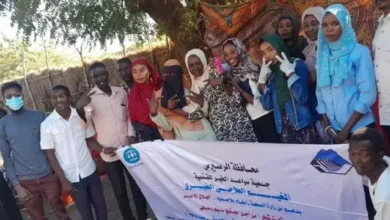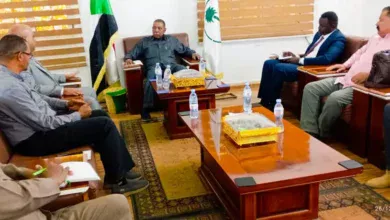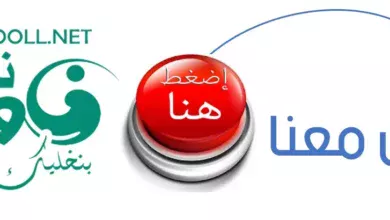Community component ✍️Taha Haroun Hamed

The geographical area includes the terrain and the environment, and you find the issues of the land in the mountains, and the human beings behind that are formed by tribalism and other components of households and such. In Sudan, we find tribalism playing out in politics. conflicts and, from an administrative point of view, we find it forming the administrative and societal system of a specific region.
(The Awai village or team) is an administrative name and has been known since ancient times (Indeed, We have created you from a male and from you, and have made you peoples and tribes so that you know. The most honorable of you in the sight of God is the most pious of you.) And our noble Messenger said to us (Leave him, for it is finished), but
The Sudanese scene is moving, as if the Sudanese were destined to experience civil wars, successive conflicts and endless bloodshed throughout their lives. After the long war in the history of the African continent which ended with the division of its two largest countries, Sudan and South Sudan, wars are raging in the Darfur region, the largest region of the west of the country. Despite the Sudanese separation, the conflict quickly spread from Darfur to the Blue Nile and South Kordofan states, known as the New South. Eastern Sudan was also not spared, which was the scene of a war that lasted almost a decade and ended with a peace agreement in 2006.
Among the scenes of bloody war, an even bloodier catastrophe arises: the tribal conflicts which transformed into war in a country composed of nearly 400 tribes, divided into around forty ethnic groups on the basis of linguistic, cultural and ethnographic characteristics , and speaking 64 writings. and spoken languages. Today, the war extends to almost all of Sudan.
Causes of conflict
The tribal conflict in Sudan cannot be considered the result of the outbreak of a civil war or armed movements, which numbered around 26 movements, some of which signed peace agreements with the government and others rejected them and chose to continue the fighting. Basically, it is a conflict over resources, and the tribal conflict first began in 1932 between the Zayadiya and Maidob tribes against the Kababish and Kawahla tribes in the area north of the capital of Darfur ( El Fasher), and was repeated in the years 1957, 1982 and 1997. The cause of all these conflicts is attributed to water sources and pastures. However, the real conflict began in 1983 between pastoralist tribes and farmers, due to competition for scarce resources and arable land, following waves of drought and desertification that hit the African Sahel region since the late sixties of the last century, and the environmental changes and transformations which led to the decline in the extent of pastures, water resources and fertile soils.
Tribalism, with its positive and negative aspects, is a concept rooted in Sudanese society and represents an important circle of individual belonging, even the forefront today. After its independence from Britain in 1956, Sudan witnessed the contemporary concept of a national state. It has witnessed many changes in governance systems and policies, which have cast a shadow over the legitimacy of its existence and even negatively affected its effectiveness. The role of the state declined and its evolution towards the true concept of national state stopped, and the balance was disrupted, so that loyalty to the tribe took precedence over loyalty to the homeland .
The Western Darfur region is considered the most affected by tribal conflicts, followed by the neighboring Kordofan region, where wars began in the 80s of the last century during the Ustad Yusuf rebellion and conflicts between (the householders and marhals (conflict over resources We find that most tribal conflicts in the Darfur region are attributed to conflict over land resources and limited water, given the population explosion and the increasing number of livestock between the nomadic pastoral tribes of Arab origin (in their entirety) (the people of Al-Marhal), and the sedentary agricultural tribes of African origin (the people of the house), and it took an ethnic form.
The lack of development in the region has compounded the first factor. Most analysts almost agree that the Darfur region has been clearly marginalized by central governments in Khartoum throughout the history of independent Sudan, despite its significant contribution to Sudan's national income through its livestock and to his monetary wealth.
The fire of tribal conflicts was ignited by the flow and spread of weapons due to conflicts in neighboring countries, then finally came the emergence of armed rebel movements against the government, leading to a strong polarization of the tribes between the government and the movements, which led to a strong polarization of the tribes between the government and the movements. brought tribal conflicts to advanced and complex stages.
Repercussions of the conflict
No one disputes that tribal conflicts weakened state authority and led to its erosion, and that the tribe became more important than institutions. There is no doubt that this situation will continue, particularly given the presence of areas controlled by armed movements and called “liberated zones”.
Traditional methods of resolving tribal conflicts through “Ajaweed” mediators are no longer effective. Furthermore, the payment of blood money to the families of victims of the conflict has become a concern for the population of Darfur because it favors the extension of the conflict and constitutes an incitement to the continuation of the massacres in Darfur.
Authorization required: to carry out all workshops
Dozens of conferences have been held in Sudan on tribal conflicts. The summary of its recommendations included calls for Sudanese political forces to address the political problem more seriously in order to find an urgent consensual solution that would end the armed conflicts in the country and meet the aspirations of the Sudanese. The overall solution is based on the restoration of the prestige of the State as the supreme authority that is not above any other authority, in addition to the adoption of a rule that guarantees real participation of all sectors of the nation, through which wealth and power are equitably distributed. according to objective criteria which eliminate the feeling of historical injustice among those who bear arms. And the interaction in the equitable distribution of wealth and power
The Sudanese race, a cultural tradition whose use has not been stopped by the ban on religion and regulations, we find the first founders
Identify the geographical features that must be preserved
This new regime also adopts a national program based on good governance and equality among all Sudanese, regardless of their ethnicities and tribes. In this document, reconciliations and reparations aim to bring justice to all those who have been injured by wars, regardless of their origin, whether regular forces, movements or tribes.
It is necessary to work to rationalize tribal consciousness and rid it of the fanaticism of ignorance, destructive rivalry, injustice and aggression, and at the same time, taking into account all forms of social organization subject to historical social laws which determine what is constant and what is variable.
It is also necessary to develop the indigenous system and employ the tribe rationally in order to achieve the defensive, social, cultural and political functions determined by a long-term strategy in accordance with the principles agreed by all components of Sudanese society. Adopt and implement cultural policies that seek to change negative cultural and social values, particularly with regard to the image of the other, as well as a deep understanding and recognition of the roots of the crisis.
In light of the current conflict, the situation in Sudan has become complete chaos, affecting the center and all of Sudan due to historical injustice, regional injustice, class arrogance, disregard and contempt of the political independence of the Sudanese government and political forces. do not humiliate yourself to solve the remaining problems, there may be no more life, especially after the appearance of masked men in the night, they ride on the back of four-wheel drive vehicles and practice beatings and terrorism against those who differ in their opinions, in a scene that shocks and disturbs the residents. This reinforces previous fears of transcending tribal, regional, political and non-state violence.
We ask God to protect the country and the people
The article was published Community component ✍️Taha Haroun Hamed First on Zoll net.





